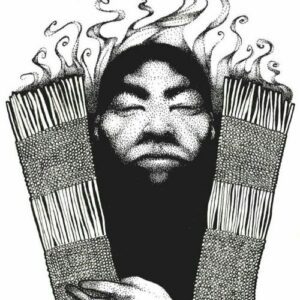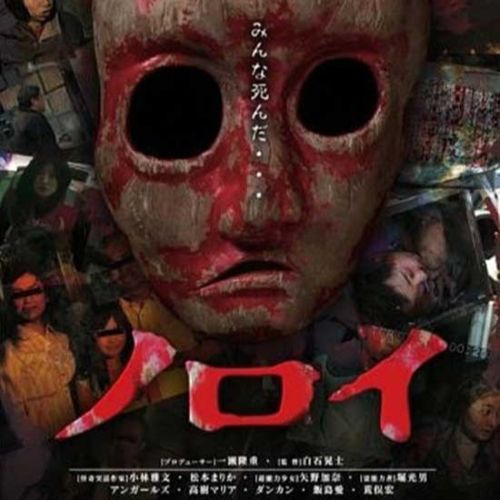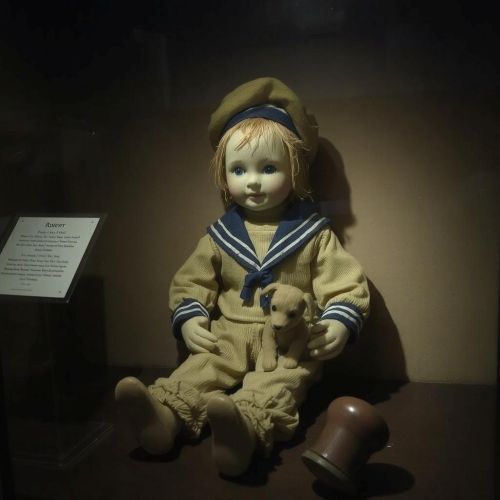
Pasatsat : The Reed Wrapped One
| Description | |
|---|---|
| Origin | Philippines |
| Classification | Ghost |
| Demeanour | Evil |
| Habitat | Graveyard |
| Status | Not Proved |

Introduction
Filipino mythology is a vivid tapestry woven with tales of spirits, monsters, and ethereal beings rooted in both history and superstition. Among these, the Pasatsat stands out as a spectral figure that haunts not just places, but memories of war and loss. Emerging from the province of Pangasinan, the Pasatsat is more than a ghost story—it is a reflection of the Filipino experience during World War II, especially the grief that followed the Japanese occupation. The name itself is derived from the Pangasinense word satsat, meaning “to stab,” echoing the chilling ritual said to banish this spirit.
Physical Attributes
Unlike other Philippine supernatural entities that take on grotesque or monstrous forms, the Pasatsat is unsettling in its simplicity. It is often seen as a rolled-up reed mat—referred to as pamalisan or banig—which was traditionally used to wrap the bodies of those who died during wartime when coffins were unavailable. The Pasatsat does not possess visible limbs or a face; instead, its eeriness lies in its stillness and silence.
Witnesses report an overpowering stench accompanying its presence, likened to the scent of rot or death. This odor is not just sensory but symbolic—connecting the spirit directly to its tragic origins. The Pasatsat’s form, wrapped in the humble material used during desperate times, acts as a haunting reminder of lives lost without dignity or proper farewell.
First Sighting/Reporting
The earliest mentions of the Pasatsat trace back to World War II, particularly in rural towns of Pangasinan. With many Filipinos unable to afford proper burials during the war, makeshift interments became common, where bodies were simply wrapped in mats and buried hurriedly in unmarked graves. In the years following the conflict, stories began to surface of lone travelers encountering strange rolled mats in the middle of roads or near old war sites.
Elders passed these accounts down to younger generations as part of the local oral tradition. Though undocumented in formal history books, the Pasatsat lives on through ghost stories, remembered especially around All Saints’ Day or during times of national remembrance. It is these generational retellings that preserve the story’s authenticity and emotional resonance.
Other Names
Though commonly known as Pasatsat in Pangasinan, the spirit carries alternate titles depending on local dialect and cultural framing. In some towns, it’s simply referred to as the Pamalisan Ghost—a name that emphasizes the material used to shroud the dead. Others have labeled it the Stabbing Ghost or Mat Walker, referencing either its feared method of exorcism or its mat-like movement.
Despite slight variations in naming, all versions retain a shared core: a restless ghost tied to improper burial during wartime. These regional terms offer insight into how folklore evolves while staying grounded in a collective narrative.
Modus Operandi
The Pasatsat is not an aggressively violent entity, but its method of haunting is deeply psychological. Typically, it materializes along isolated trails, near cemeteries, or in places historically known for mass burials. Witnesses often describe being frozen in place, overcome with dread at the sight of the motionless mat lying directly in their path.
To end the encounter, folklore dictates that one must stab the mat. Upon doing so, no blood is shed—instead, an unbearable, rotting stench is released, which many believe represents the spirit’s final breath. This symbolic act of stabbing not only echoes the spirit’s name but also serves as a release, allowing it to finally find rest. The interaction becomes a solemn ritual, underscoring the deep connection between the living and the improperly mourned dead.
Pop Culture References
While the Pasatsat has not achieved the mainstream notoriety of figures like the Aswang or Kapre, it has found a niche audience among horror writers and artists fascinated by lesser-known folklore. Independent comic creators and illustrators have brought the Pasatsat into visual storytelling, often portraying it as a ghost wrapped in sorrow and silence, rather than outright terror.
In online horror communities and podcasts dedicated to Southeast Asian myths, the Pasatsat is occasionally featured as an example of war-related hauntings. Its story has also appeared in digital folklore archives and independent films exploring forgotten spirits of the archipelago. These modern retellings don’t just entertain—they preserve the cultural memory and honor the unseen victims of wartime atrocities.
Current Status
Today, the Pasatsat remains a poignant yet obscure figure in the landscape of Filipino mythology. It is not commonly celebrated in festivals or national folklore showcases, but it endures in smaller, tight-knit communities where oral tradition remains strong. In Pangasinan, particularly among older generations, the story of the Pasatsat is still told as a cautionary tale—one that teaches respect for the dead and reverence for burial customs.
In educational and heritage circles, the Pasatsat has started to receive renewed interest as part of efforts to document endangered folk stories. Projects focused on decolonizing history and recognizing local narratives now include the Pasatsat among other wartime spirits. Its relevance may have faded from popular culture, but its symbolic weight has only deepened with time.
Source
admin. (2017). Pasatsat – Philippine Spirits. https://phspirits.com/pasatsat/
Madrid. (2023). Philippines Mythical Creatures That Even Filipinos Might Not Know. https://news.lindelatravel.com/2023/04/philippines-mythical-creatures-that-even-filipinos-might-not-know/
View all posts by BuynSell. (2017). The Philippine Urban Legends Creatures – Pilipinas kong Mahal. https://thinkingpilipinas.wordpress.com/2017/10/12/the-philippine-urban-legends-creatures/
Horror Chronicles. (2024). Pasatsat: The Enchanted Cloth and Its Role in Filipino Folk Magic … https://horrorchronicles.com/pasatsat/
Nathalie Robles. (2019). 10 Underrated Myths and Legends in the Philippines –. https://balikbayanmagazine.com/arts-culture/10-underrated-myths-and-legends-in-the-philippines/
Amiel Pineda. (2024). Superstitions and Beliefs in Filipino Folklore – Pinas Culture –. https://pinasculture.com/superstitions-and-beliefs-in-filipino-folklore/









